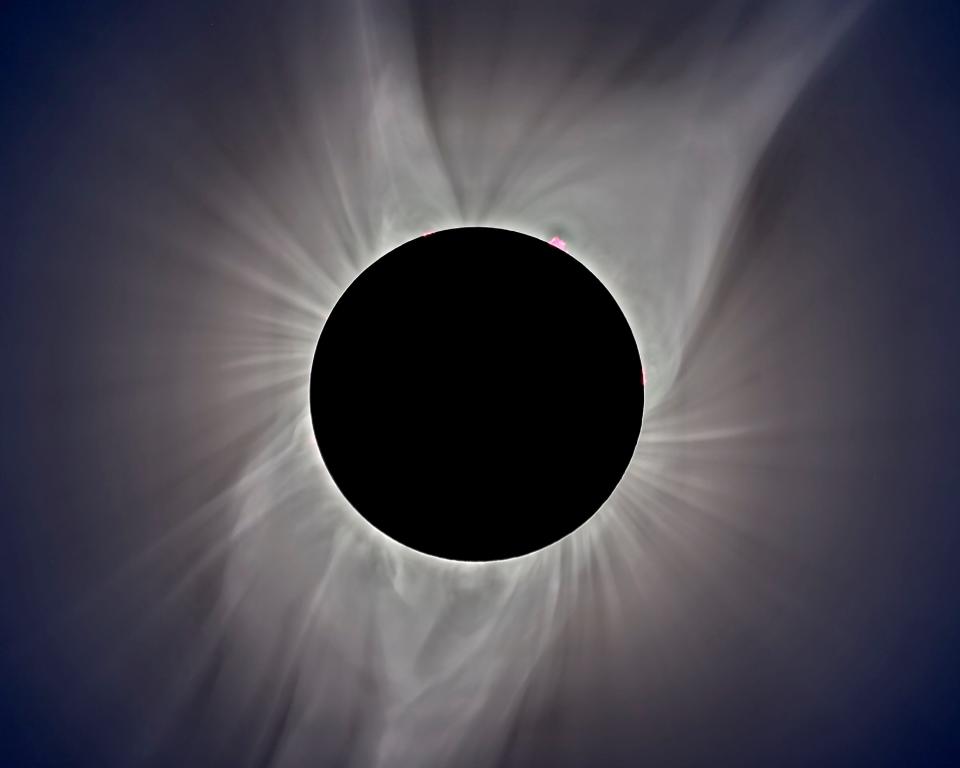Will it rain during the solar eclipse in Texas? Too soon to tell. See data from past years
Flight schedules have been arranged, hotel rooms have been booked, schools have canceled classes, and a handful of counties have even issued disaster declarations − all in preparation for the 2024 solar eclipse.
While all these plans give us the illusion of control, there is still one factor that we can't adjust to our satisfaction: the weather.
Or we can't control it yet, at least.
While it's still too early for an accurate forecast for April 8, we can look back on the weather on that date in previous years.
Solar eclipse 2024: Here's how to get free solar eclipse glasses in Texas and how to know they're safe

A look back: April 8 Average temperatures
The Austin/San Antonio National Weather Service Office keeps weather records dating back to September 1891. This data encompasses month-by-month and even day-by-day temperatures. Here are the averages for April 8, in degrees Fahrenheit:
Austin Mabry − 68 degrees
Austin Bergstrom − 67 degrees
San Antonio − 68 degrees
Del Rio − 68 degrees
More: An ultimate guide to total solar eclipse 2024 events in Central Texas
What was the weather on April 8 in the last five years?
By most measures, 1891 was quite a while ago. Changes in weather patterns, due in part to climate change, make it difficult to compare historical data.
What about April 8 weather over the last five years? Here's a snapshot (all temperatures are measured in degrees Fahrenheit, precipitation is measured in inches, and "T" indicates a thunderstorm):
Where are the best spots to view the total solar eclipse in Texas? Here are a few options
All temperatures are measured in degrees Fahrenheit. Precipitation is measured in inches, and "T" indicates a thunderstorm.
Austin-Bergstrom International Airport
Year | Maximum | Minimum | Average | Precipitation |
2023 | 62 | 51 | 56.5 | T |
2022 | 78 | 36 | 57.0 | 0 |
2021 | 89 | 44 | 66.5 | 0 |
2020 | 91 | 71 | 81.0 | 0 |
2019 | 88 | 60 | 74.0 | T |
Austin's Camp Mabry
Year | Maximum | Minimum | Average | Precipitation |
2023 | 62 | 53 | 57.5 | T |
2022 | 79 | 48 | 63.5 | 0 |
2021 | 92 | 53 | 72.5 | 0 |
2020 | 95 | 73 | 84.0 | 0 |
2019 | 89 | 60 | 74.5 | T |
San Antonio Area
Year | Maximum | Minimum | Average | Precipitation |
2023 | 75 | 53 | 64 | T |
2022 | 81 | 44 | 62.5 | 0 |
2021 | 94 | 63 | 78.5 | T |
2020 | 92 | 71 | 81.5 | 0 |
2019 | 88 | 57 | 72.5 | 0 |
Del Rio Area
Year | Maximum | Minimum | Average | Precipitation |
2023 | 77 | 57 | 67.0 | 0 |
2022 | 82 | 53 | 67.5 | 0 |
2021 | 102 | 55 | 78.5 | 0 |
2020 | 95 | 73 | 84.0 | 0 |
2019 | 94 | 55 | 74.5 | 0 |
This article originally appeared on Austin American-Statesman: See total solar eclipse weather forecast in Texas from past years

